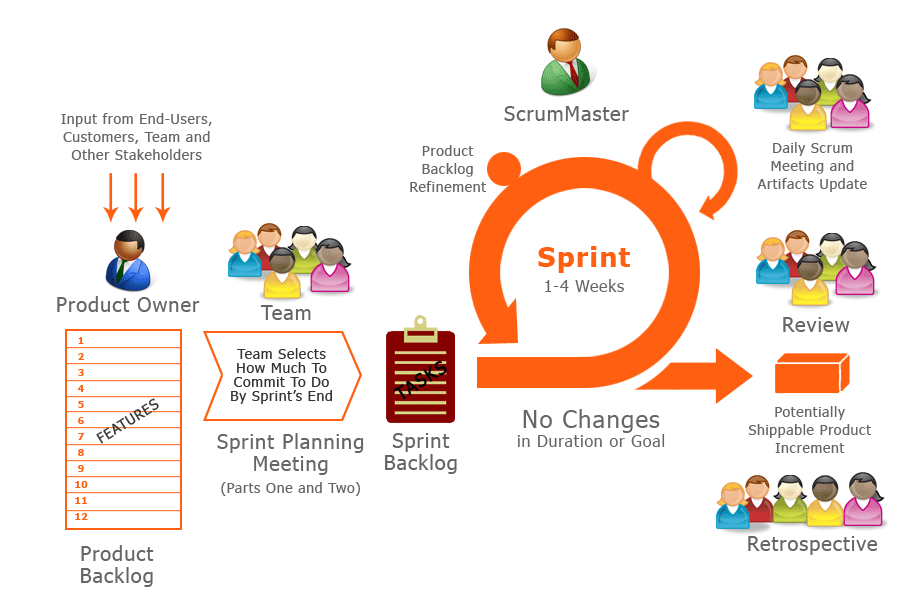At iSeatz, we utilize an agile Scrum organization to work through major software and development processes. This is a behind-the-scenes look at how we organize our talented staff into efficient teams to build best-in-class software.
The term “Scrum” came out of this agile way of thinking. The traditional idea of working a multi-departmental project, the temptation is to work it like a relay race. One department completes the task and then passing the task to the next department. Instead, having a group of individuals with varied skill sets, work through the project together and the autonomy to work a problem and assist one another, like a rugby scrum, moves the project along more efficiently.
Waterfall vs Agile
A traditional organizational structure is where a task moves from one department to be worked and when completed, sent to the next department to be worked independently, essentially “waterfalling” throughout the organization. This methodology is very structured and rigid, and runs the risk of major functional problems not being noticed until after many teams have put energy into a task.
iSeatz utilizes an Agile structure where a cross-departmental team is present throughout envisioning, design and development. This gives all departments the ability to designing and develop a task collaboratively, working out major problems prior to the task being developed.
Basics of Scrum

(image source: Mario Lucero)
Features or Project Request
A Scrum begins with a new initiative or project. Input and collaboration with the end-user or client will give the development team direction on what the end-product will look like, what features are available and what is prioritized.
Stories Written and Backlog is Created
Once a clear direction is created, the major task is broken down into small, workable tasks. These tasks are usually referred to as stories.
Team Creation & Planning Meeting
A cross-departmental team of developers, engineers, designers, managers and quality control associates is assembled and tasked with working a set of stories, or tasks, from the project backlog. The team reviews the tasks and agrees upon a set amount of stories to be worked within a set timeline. A ScrumMaster is appointed to ensure the team stays on schedule.
Sprint
The Scrum team focuses on working through the agreed upon tickets within a set timeframe. Most sprints last between one and four weeks. During the sprint, the team meets daily to stay accountable and discuss process made and impediments. The ScrumMaster works to eliminate impediments to keep the team productive.
Delivery, Retrospection and Repeat
After all testing is cleared, if the initiative was small and completed in one sprint, the final product is delivered to the client. If the project is larger in scope, the team reviews the backlog and begins organizing the next sprint. Retrospection also occurs to review processes and see if any optimizations can be made in the project.
For more information on the history of the Scrum methodology, check out our post The History of Lean Product and Scrum Organization.
